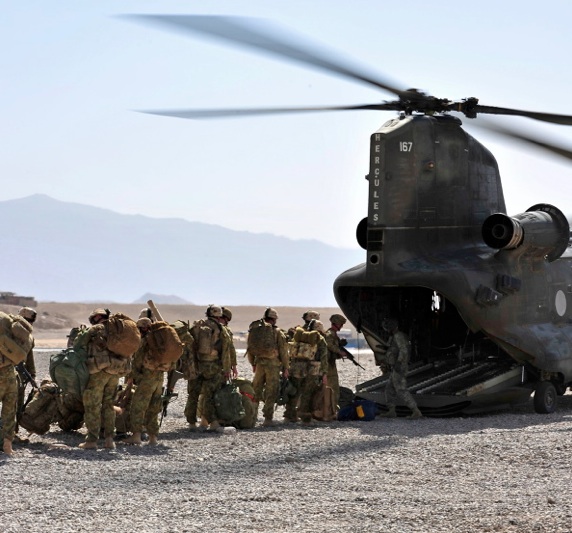
On 11 April 2003, 20 members of the Australian Special Air
Service (SAS) captured 66 Iraqi, Iranian and Syrian men who were driving
through the western desert of Iraq. Among those captured was a 43-year-old Iranian man, Tanik
Mahmud.
The SAS forces detained Mr Mahmud and his associates for 10
hours. They were then handed over to the UK Royal Air Force (RAF) for transport
to a US-run detention facility in Iraq.
Documents released to PIAC reveal that Mr Mahmud
subsequently died on a RAF helicopter.
Investigations in the UK suggested the strong possibility that three
RAF members had beaten Mr Mahmud to death, however no criminal charges have been laid.
The UK and Australian governments have refused to release the full details of
the events on 11 April 2003.
As part of their joint operations in Iraq, an agreement, known as the Trilateral Arrangement, was entered into by Australia, the UK and the
US. The agreement governed how detainees would be transferred between these three allies, and if implemented, it would have ensured compliance with international law and the Geneva Conventions.
However, Australia sought to circumvent the operation of the
Trilateral Arrangement (and thus sought to avoid its responsibilities under
international law and the Geneva Conventions) by adopting a practice whereby at
least one US military representative would be present with the ADF when
detaining prisoners.
Australia and the US asserted that the presence of this
single US representative allowed the US to take sole responsibility for the
detention.
This practice, which relies on a legal and logical fiction,
was used on 11 April 2003.
Because there was just one US soldier present when the 20 SAS troops captured and detained the 66 men, including Mr Mahmud, Australia maintained
that the US was the sole detaining power. Australia therefore claimed no transfer took place and the
Trilateral Arrangement did not apply.
Australia sought to avoid its international legal
obligations in relation to Mr Mahmud and the 65 other men.
However, it seems clear that Australia was in reality the
detaining power of the men and thus had obligations under the Geneva Conventions
to ensure their humane treatment.
The transfer to the UK should have been pursuant to the
Trilateral Arrangement, which would have required Australia ensure that the detainees were accorded their Geneva Convention rights, and would have allowed Australia to monitor the US and UK treatment of the detainees.
Instead, Australia simply handed the 66 men to the UK for
transport to US custody.
Australia then tried to wash its hands of these captives.
When Australia later sought details from the US about these men, Australia’s
ally refused to provide them. When
the Iranian Government requested information about the four Iranian men’s
whereabouts, Australia simply responded that it was not the detaining power.
Until the release of these documents to PIAC, Australian
authorities have not revealed Mr Mahmud’s death in custody.
The story behind Mr Mahmud’s capture and detention
illuminates the way in which Australia has relied on a legal fiction to avoid
its legal responsibilities towards detainees in Iraq. His unexplained death
highlights the gravity of the possible consequences that flow from this policy.
Related coverage:
- War prisoner scheme defied global law (Sydney Morning Herald, 4 July 2011)
- Military detention: uncovering the truth (Public Interest Advocacy Centre, 4 July 2011)
- ADF deploys legal fiction in Iraq & Afghanistan (Public Interest Advocacy Centre, 4 July 2011)
Photo: Flickr